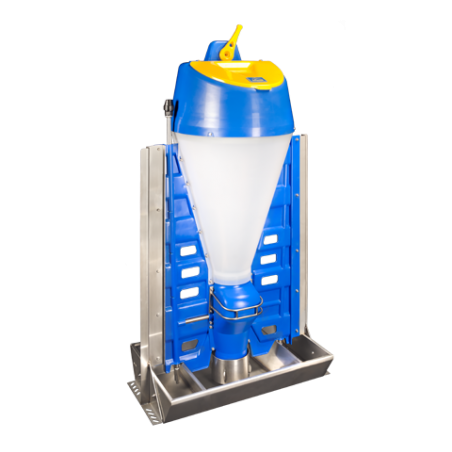Feeding growing-finishing pigs supplemental fat is a common practice in the swine industry and can result in improved feed efficiency and reduced feed intake; however, dietary lipids also play a key role in determining pork composition. High oleic soybean oil is a potential dietary fat source for swine diets due to its increased oleic acid content, regarded as having the greatest influence on fat quality. The objectives of the current study were to evaluate the effects of feeding graded levels of high oleic soybean oil on growth performance and carcass characteristics. A total of 288 pigs raised in two separate blocks were assigned to one of four diets containing either 25% dried distiller’s grains with solubles (DDGS), 2% high oleic soybean oil, 4% high oleic soybean oil, or 6% high oleic soybean oil. Pigs were fed for 98 days using a 3-phase feeding system. Pigs were individually weighed and feed intake was recorded throughout the trial to calculate average daily feed intake and gain to feed ratio. A total of 144 pigs were transported to the laboratory and fabricated into primal and subprimal cuts to calculate carcass cutting yields.
Differences in growth performance were observed, with pigs fed the DDGS treatment exhibiting greater overall average daily feed intake consuming 0.21, 0.18, and 0.28 kg/d more than the 2%, 4%, and 6% high oleic soybean oil diets, respectively. Pigs fed the 6% high oleic soybean oil diet had greater overall gain to feed ratios than pigs fed DDGS and 2% high oleic soybean oil diets but did not differ from pigs fed 4% high oleic soybean oil. Furthermore, differences in carcass traits were observed. Hot carcass weight was increased in pigs fed the 6% high oleic soybean oil diet compared with pigs fed the DDGS and 2% high oleic soybean oil diets, while pigs fed 4% high oleic soybean oil did not differ from either extreme. Additionally, pigs fed 4% and 6% high oleic soybean oil produced fatter carcasses with reduced standardized fat-free lean.

Overall, pigs fed 2% high oleic soybean oil had reduced average daily feed intakes with similar backfat thickness and standardized fat-free lean compared with pigs fed the DDGS treatment. However, pigs fed 4% and 6% high oleic soybean oil not only had improvements in average daily feed intakes and gain to feed ratios but also had increased backfat thickness.
Gaffield KN, Boler DD, Dilger RN, Dilger AC, Harsh BN. Effects of feeding high oleic soybean oil to growing-finishing pigs on growth performance and carcass characteristics. Journal of Animal Science. 2022; 100(3): skac071. https://doi.org/10.1093/jas/skac071










